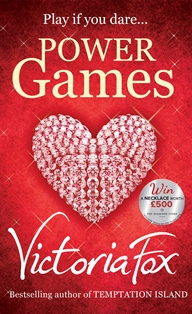Author Victoria Fox shares advice on writing romance; developing your writing voice, as well as style and characterisation.

Yes, the romance market is crowded. Why? Well, readers love a love story. So, while a massive genre can be daunting to write into, it’s also a sign that there is steady and enduring demand. Where there is demand, there is supply. The publishing industry is forever looking for new voices, and, faithful to the rich tradition of romances that have appealed to readers for decades, new writers to carry this trusted baton forward.
The first thing is to find your style. That is what will set you apart and make you stand out. Every writer has a voice; even if you don’t think you do, or you worry you haven’t ‘found it yet’, it’s there. Give this a shot: immerse yourself in several books by an author you admire and then try, really try, to copy their style of writing. Then compare the two. You’ll be surprised that, much as you have meant to suppress them, glimmers of your own voice shine through. It might be a chosen word or a turn of phrase, a note of humour or a thread of melancholy: whatever it is, those are the parts you must focus on. In the romance market, it’s easy to feel derivative of the greats that have gone before, but that is part of the process. New styles come about through borrowing and mixing and adding a flavour of our own. Consider it a big literary cake (always good to think of things in terms of cake), always baked with the same staples, but with a pinch of this or a shake of that that marks the crucial difference.
When agents, and, later, editors, read your work, they need to be gripped. This is the second point. They see so many submissions that something special has to stand out, something that makes them sit up and think: I’ve got something here. I used to read manuscripts for a women’s fiction list and within a page I knew if I wanted to read on. I was looking for confidence – in voice, in characters, in offering an intriguing set-up. Often first drafts need bags of fine-tuning, sometimes complete reworking, but if the nuts and bolts are there then that’s what counts. Know what you want to say and how you want to say it. Dive in with a bold, committed opening. Drop us into a scene.
Once upon a time, there was a writer who convinced herself she would never be published. The market was too competitive, too many authors were writing romances and they were writing them better. What room was there for her? What could she bring that was anything different? That writer was me - six books and five years ago.Your third assets are your characters. Remembering a treasured love story, it’s usually the people that stick in the mind before the plot: Darcy and Miss Bennet,
Heathcliff and Cathy, Romeo and Juliet. Romance hinges on blossoming relationships – more specifically, the relationship between two central characters. We have to believe in these people as individuals and also as a couple. We have to like them, and want them to be together. We have to see forces keeping them apart, whether it’s circumstance, misunderstanding, or plain pig-headedness. Readers derive great pleasure from seeing the bigger picture: we know these lovers should be united, we know they deserve their happy ending – but perhaps they haven’t got there yet. And so we will them on. This is the basis of most famous love stories, and you could do worse than to use it in your own. Imitation and innovation work hand in hand. Remember the cake.
What’s more, characters, when drawn right, can guide an author through her story – particularly characters travelling on a love arc. I remember tearing my hair out over my first Mills & Boon. Until then, bonkbusters were my trade, and the sheer pace and energy of them meant that my primary players were under less scrutiny: bonkbusters rely on multiple strands, locations, characters, often several romance threads at once, and there wasn’t such pressure on that central hinge. My Mills & Boon venture dealt with a more traditional romantic set-up: boy meets girl, frictions crackle, they decide they don’t like each other but we can see that they do, events transpire to bring them to this admission and then they find their happy ending. This time I couldn’t rely on scene switching and high action to keep the reader engaged. Reader engagement came from the authenticity and soul of the characters. We had to buy into them totally.

Partway through the book, I realised I didn’t know my protagonists properly. So, I set about figuring them out. How was a reader going to know and love them if I didn’t? A friend recommended that I put together a character sheet. I’ve always been slightly disdainful of stuff like this, impatience to dive into a story always getting the better of me, but I decided to give one a try. It worked. I wrote down everything I could about my players, freewheeling ideas, just writing and writing about their lives, their loves, what they ate for breakfast, who their friends were, their favourite film, their greatest fear, their lowest moment, everything down to the colour of their underwear. Did I use any of this in the book? No. But the fact that I knew it meant I knew them, and therefore all that they did or said was faithful to who they were. If you’re struggling with characterisation, this exercise is a fine place to start.
Six books and five years ago… It goes to show that no market is too crowded for another voice, so long as that voice has style, confidence and good, memorable characters… Have a go. You might just find that you and your writing live happily ever after.
Victoria Fox divides her time between London and Bristol and is the author of Hollywood Sinners, Temptation Island, Wicked Ambition and Glittering Fortunes. Her novels have sold over 145,000 copies in the UK and she has firmly established herself as the natural successor to Jackie Collins, with critical acclaim from the media and her peers - including Jackie Collins herself. Find out more about her on her website.
Comments